Discover Your Birthstone: A Monthly Guide
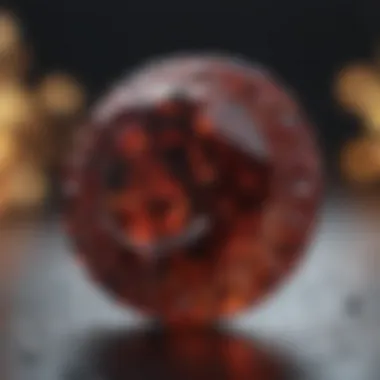
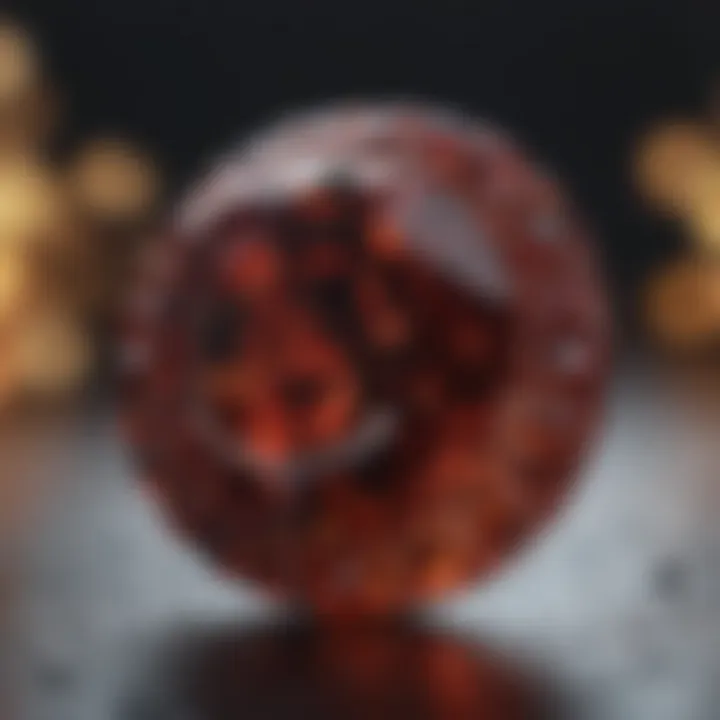
Intro
Birthstones have long captivated people with their deep meanings, stunning beauty, and unique properties. For each month of the year, there exists a specific gemstone representing that time, believed to carry certain benefits and significance for individuals born during that month. The allure of these gemstones lies not just in their visual appeal but also in their historical narratives and cultural connotations. This article will delve into the world of monthly birthstones, highlighting their characteristics, historical importance, and practical advice for selecting and caring for birthstone jewelry.
Gemstone Overview
Definition and Characteristics
Gemstones are minerals, rocks, or organic materials that have been cut and polished for use in jewelry and decorative items. Each gemstone possesses unique characteristics, such as hardness, color, clarity, and luster, which contribute to its appeal and value. For example, diamonds are renowned for their hardness and brilliance, while emeralds are celebrated for their vivid green color and inclusions.
Some of the key features that define gemstones include:
- Color: The most striking feature, influenced by the mineral composition.
- Clarity: Refers to the presence of internal or external flaws.
- Cut: The manner in which a gemstone is shaped and polished to enhance its beauty.
- Carat weight: Measurement of how much a gem weighs; larger stones are often rarer and more valuable.
Classification of Gemstones
Gemstones can be broadly classified into two categories: precious and semi-precious. Precious gemstones include diamonds, rubies, sapphires, and emeralds. These stones are typically rarer and command higher prices due to their superior qualities. Semi-precious stones, such as amethyst, garnet, aquamarine, and citrine, are more commonly available and generally less expensive.
Furthermore, gemstones are categorized based on mineral types, organic origins, and synthetic creations. The classification can impact various aspects, including pricing and desirability, making it an essential consideration for both collectors and consumers.
Historical Significance
Ancient Uses and Cultural Importance
Throughout history, gemstones have held significant roles across various cultures, often associated with power, protection, and spirituality. Ancient civilizations believed that gemstones possess magical properties that could bring fortune, health, and happiness. For instance, in Ancient Egypt, lapis lazuli was cherished not only for its striking blue color but also for its association with divinity.
Various cultures have also linked specific gemstones to specific attributes or powers. For example:
- Garnet: Often seen as a protective stone, ideal for travelers.
- Sapphire: Traditionally symbolized wisdom and royalty.
- Amethyst: Believed to provide clarity and peace of mind.
Myths and Legends Surrounding Gemstones
Many gemstones are surrounded by myths and legends that further enhance their significance. The lore associated with these stones often varies by culture but typically reflects shared beliefs in their power and importance. As an example, the folklore concerning the ruby speaks of it being the 'king of gemstones,’ said to bring love and peace to its owner.
Preamble to Birthstones
The concept of birthstones holds deep significance, connecting people to their months of birth through unique gemstones. These stones are not only symbols of identity but also embody cultural meanings and historical contexts that enhance their allure. In this article, we explore the fascinating world of birthstones, detailing their properties, meanings, and roles in jewelry. Readers will gain insights into how birthstones can symbolize personal milestones and enrich their lives.
Definition and Importance
Birthstones are gemstones that are traditionally associated with each month of the year. Each stone possesses distinct characteristics and historical significance, making them unique markers of identity. The importance of birthstones goes beyond mere decoration; they often symbolize strengths and virtues attributed to individuals born in that month. Understanding birthstones helps deepen one’s appreciation for gemstones and their role in different cultures.
Historical Origins of Birthstones
The tradition of associating specific gemstones with months began centuries ago. Its origins are traced back to the Biblical era, where the Breastplate of Aaron was adorned with twelve stones, each representing a tribe of Israel. Over time, different cultures added layers of significance to each stone. One notable development occurred during the 20th century when the American National Retail Jewelers Association standardized the modern birthstone list. This formalization helped solidify the cultural associations that continue to influence people's beliefs and practices today.
Cultural Significance Across Civilizations
Across various civilizations, the significance of birthstones remains profound. The ancient Greeks believed that wearing a person’s birthstone could bring good fortune and health. In many cultures, gemstones are thought to emit specific energies, contributing to emotional and physical well-being. For instance, in Hinduism, gemstones are often linked to different planets and astrological influences. Thus, birthstones are not just personal symbols; they also connect individuals to wider traditions and historical contexts, illustrating the multi-faceted role of these gems in human culture.
"The gemstones that represent our birth months encapsulate not just personal journeys but also the rich tapestry of human history and beliefs."
In summary, birthstones serve as gateways to understanding personal identity, historical significance, and cultural contexts. Delving into these aspects allows us to appreciate the stories behind the stones.
Monthly Birthstones Overview
Understanding birthstones is crucial. Each gemstone not only symbolizes a specific month but also carries a rich history and distinct qualities. This section will explore the essence of each month's birthstone, offering insights into their properties, the meanings ascribed to them, and their use in jewelry design. Such knowledge enhances appreciation for these gemstones, leading to informed choices when selecting pieces that resonate personally.
January: Garnet
Properties and Composition
Garnet is a complex silicate mineral group that exhibits a range of forms and colors. The most well-known variety is red garnet, which owes its hue primarily to the iron present. Its hardness, rated at 6.5 to 7.5 on the Mohs scale, makes it suitable for various types of jewelry. The unique lattice structure of garnet contributes to its brilliance, allowing for striking facets.
Symbolism and Meaning
Garnet is often associated with protection and is said to symbolize friendship and trust. It has historical ties, believed to keep enemies at bay and ensure safe travels. This is why garnet is not only sought after for aesthetics but also for its alleged powers. Users appreciate garnet for its ability to promote self-confidence and emotional balance.
Uses in Jewelry
Garnet's versatility leads to its widespread use in jewelry-making. It can be found in rings, necklaces, and earrings. Its affordability contributes to its popularity. The deep red color pairs well with gold, making it a frequent choice for vintage-style pieces. However, owners must be cautious of scratches due to its relative softness compared to other gemstones.
February: Amethyst
Properties and Composition
Amethyst is a purple variety of quartz, known for its stunning rich color due to iron and irradiation. It ranks 7 on the Mohs hardness scale, ensuring durability in everyday wear. The vibrant hue can vary from light lavender to deep violet, making it a desirable gemstone in various jewelry forms.
Symbolism and Meaning
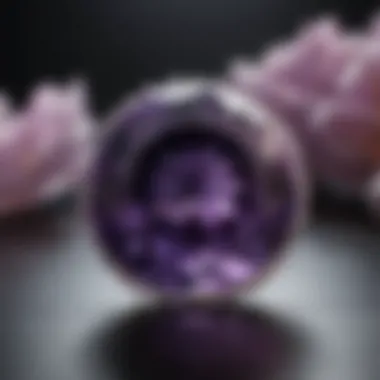
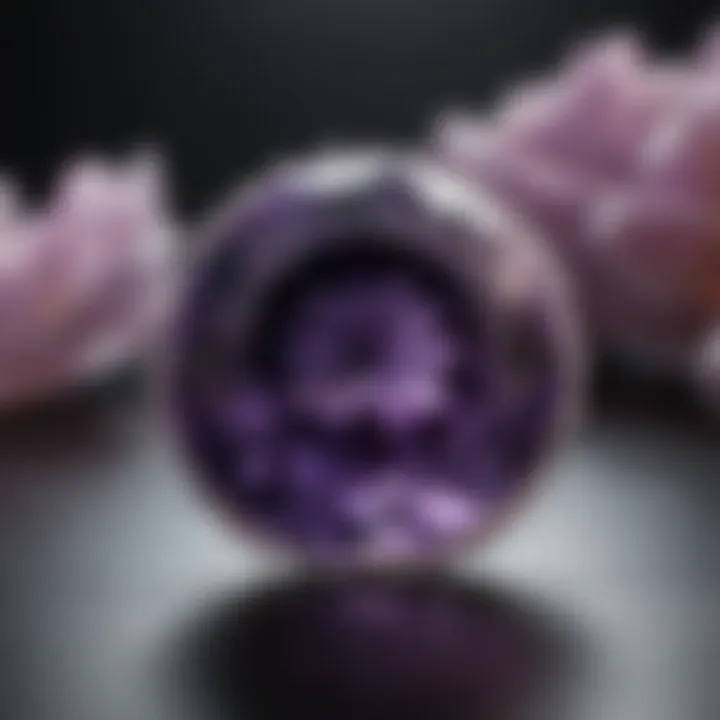
Amethyst is linked with calmness and peace. It was historically believed to guard against intoxication and is associated with balance and stability. People are drawn to it for meditation and spiritual growth, valuing its soothing properties. This makes amethyst an appealing option for those seeking tranquility in their lives.
Uses in Jewelry
Amethyst is highly regarded in jewelry. Its affordability and beauty mean it can be fashioned into elaborate pieces without a significant expenditure. It can be found in rings, bracelets, and pendants, often cut into elegant shapes that display its color depth. Its only downside is that prolonged exposure to direct sunlight can fade its vibrant hue.
March: Aquamarine
Properties and Composition
Aquamarine is the blue variety of beryl, with a hardness of 7.5 to 8 on the Mohs scale. Its color ranges from pale blue to deep teal, resulting from the iron content. The clarity and brilliance of aquamarine make it a favored choice for those looking for a refreshing look in jewelry. Its unique composition allows for large, clear stones that highlight its sea-like hues.
Symbolism and Meaning
Aquamarine is associated with peace and serenity. Historically, it was believed to be the treasure of mermaids and is often seen as a symbol of protection for sailors. Many value it for its calming influence, making it popular among those seeking emotional clarity or wisdom in their decisions.
Uses in Jewelry
Aquamarine is commonly used in rings, earrings, and necklaces. Its clarity and color make it an ideal centerpiece stone in jewelry designs. However, similar to amethyst, aquamarine may be susceptible to scratching. Care should be taken to preserve its clear surface.
April: Diamond
Properties and Composition
Diamonds are renowned for their unmatched hardness, recording 10 on the Mohs scale. They consist primarily of carbon atoms arranged in a crystal structure that yields incredible strength and brilliance. The clarity, cut, and color can vary significantly, contributing to their value.
Symbolism and Meaning
Diamonds represent eternal love and commitment. They are often associated with milestones like engagements and anniversaries due to their durability and beauty. Their symbolic weight makes them a go-to choice for meaningful gifts, enhancing their cultural significance in various traditions.
Uses in Jewelry
Diamonds are ubiquitous in fine jewelry, adorning engagement rings, necklaces, and earrings. Their unmatched brilliance attracts attention, making them symbolic and aesthetic choices. However, their high value means careful consideration is needed before making a purchase.
May: Emerald
Properties and Composition
Emeralds belong to the beryl family and display a deep green color caused by the presence of chromium. They rank 7.5 to 8 on the Mohs scale, offering good durability. However, emeralds are often included, making clarity a key consideration. This feature adds uniqueness and can enhance their character.
Symbolism and Meaning
Emeralds symbolize rebirth and love. They have rich cultural significance across different civilizations. Many believe emeralds promote harmony and balance. Their association with royalty enhances their appeal for those seeking an elegant touch.
Uses in Jewelry
Emeralds are commonly found in rings and necklaces. Their rich color pairs beautifully with various metals, but special care is required. Due to inclusions, they can be more fragile than other gemstones. Hence, proper handling is crucial for maintaining their beauty.
June: Pearl
Properties and Composition
Pearls form within mollusks, making them organic gems. Their unique composition involves layers of nacre, giving them a distinct luster. Pearls rank 2.5 to 4.5 on the Mohs scale, which makes them softer than many gemstones.
Symbolism and Meaning
Pearls symbolize purity and innocence. Historically, they have been associated with bridal jewelry. They are popular choices for gifts due to their timeless appeal, often representing wisdom gained through experience.
Uses in Jewelry
Pearls are favored in classic and modern jewelry designs alike. They can be worn as standalone pieces or combined with other gemstones in elaborate designs. Their softness requires careful maintenance, limiting their use in certain styles.
July: Ruby
Properties and Composition
Rubies are a red variety of corundum and rank 9 on the Mohs scale. Their red color, attributed to chromium, signifies strength and vitality. Rubies can be found in a range of red hues, adding depth and variety for collectors and jewelry enthusiasts.
Symbolism and Meaning
Rubies symbolize love and passion. They are believed to promote energy and leadership qualities. Their deep historical significance and connection to royalty enhance their allure, making them sought after in precious jewelry.
Uses in Jewelry
Rubies are popular in both engagement rings and high-end pieces. Their vibrant color attracts attention, making them centerpieces in designs. However, quality rubies can come at a significant cost, with their value linked closely to the quality of the stone.
August: Peridot
Properties and Composition
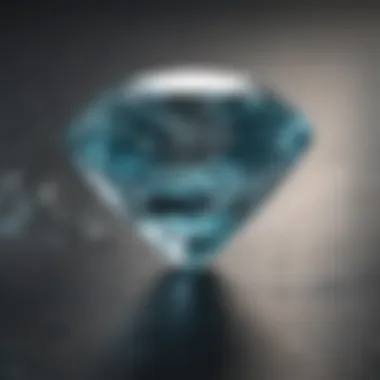
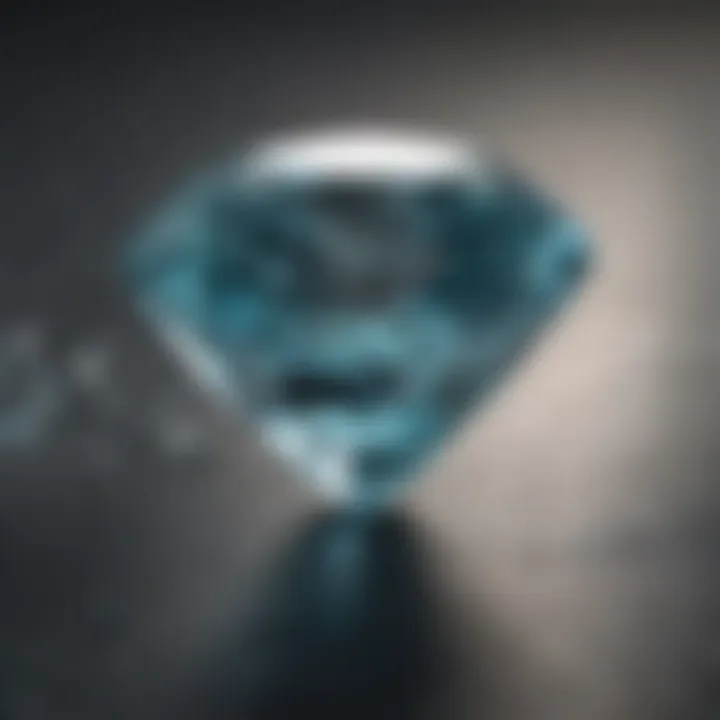
Peridot, a gem-quality variety of olivine, typically exhibits a yellowish-green hue, influenced by iron. It ranks 6.5 to 7 on the Mohs scale, ensuring it is relatively durable. The gem’s unique clarity makes it especially attractive and sought after.
Symbolism and Meaning
Peridot is often associated with strength and healing. It is believed to dispel fears and negativity, promoting happiness and joy. This makes it a popular choice for gifts meant to inspire positivity.
Uses in Jewelry
Peridot is commonly used in necklaces, rings, and earrings. Its bright color offers a refreshing contrast in various jewelry designs. Nevertheless, it requires care to avoid scratches and maintain its vivid appearance.
September: Sapphire
Properties and Composition
Sapphires are typically blue corundums but can occur in other colors. They boast a hardness of 9 on the Mohs scale, making them highly durable. Their color comes from trace elements like iron and titanium, providing an appealing range for consumers.
Symbolism and Meaning
Sapphires symbolize wisdom and nobility. Historically, they have been highly valued by royals. Many believers assert that sapphires promote good health and protection, cementing their place in spiritual traditions.
Uses in Jewelry
Sapphires are immensely popular in engagement rings and fine jewelry collections. Their durability makes them suitable for everyday wear. However, their cost and availability can vary widely depending on the quality and treatment.
October: Opal
Properties and Composition
Opals are known for their unique play-of-color due to their silica structure. They rank 5.5 to 6.5 on the Mohs scale, making them less durable than other gemstones. Their delicate handling is necessary to maintain their appearance and prevent damage.
Symbolism and Meaning
Opals represent creativity and inspiration. They have a mystical connection across cultures, believed to enhance imagination. This inspires many to wear opals for their artistic pursuits.
Uses in Jewelry
Opal's distinctive colors make it popular in diverse jewelry styles. From rings to earrings, they enhance personal expression. However, considerations for their fragility are critical when selecting opal jewelry.
November: Topaz
Properties and Composition
Topaz is typically seen in shades of blue, yellow, or brown. It ranks 8 on the Mohs scale, offering good durability for users. Its hardness allows for elaborate cuts that showcase its beauty.
Symbolism and Meaning
Topaz symbolizes love and affection. It is believed to bring joy and good luck. This enhances its popularity in gift-giving, making it a common choice for special occasions.
Uses in Jewelry
Topaz is frequently used in rings and necklaces, providing a bright pop of color. Its accessibility and variety make it appealing to consumers looking for unique pieces. Care should be taken to avoid scratches on its surface.
December: Turquoise
Properties and Composition
Turquoise is a blue-to-green mineral that forms in nodules. It ranks 5 to 6 on the Mohs scale, which means it requires careful handling. Its distinctive hue, enriched by copper and iron, makes it easily recognizable.
Symbolism and Meaning
Turquoise is associated with protection and healing. Many cultures regard it as a stone that brings luck and positive energy. This significance makes it a favored choice for gifts meant to convey care and support.
Uses in Jewelry
Turquoise is often used in southwestern-style jewelry and various modern designs. Its striking color contrasts well with metals like silver, providing striking combinations. However, its softness demands attention to maintenance to ensure longevity.
Choosing Birthstone Jewelry
Choosing birthstone jewelry is an important aspect of personal expression and sentiment. Birthstones hold a special place in the hearts of many. They offer both aesthetic appeal and meaningful representation related to one's birth month. This section examines the significant factors to consider when selecting such jewelry, as well as where to make these purchases.
Factors to Consider
Personal Preference
Personal preference plays a crucial role in selecting birthstone jewelry. Each individual has unique tastes that influence what they wish to wear. A person's choice of stone can reflect their personality or resonate with their feelings. For instance, some may prefer the rich color of a ruby while others might lean towards the calming hues of an aquamarine. The key characteristic of personal preference is its inherent subjectivity.
Personal preference is often a beneficial choice for buyers. By selecting gemstones that resonate personally, individuals feel more connected to their jewelry. This connection enhances the emotional value of the piece. However, this also means that trends might affect choices. What is popular today may not appeal to everyone.
Occasion
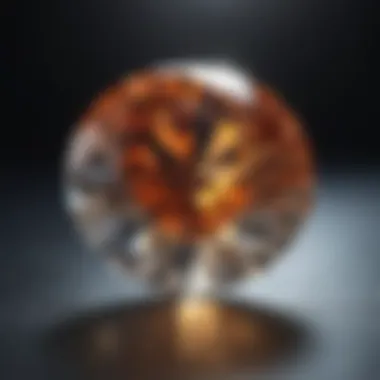
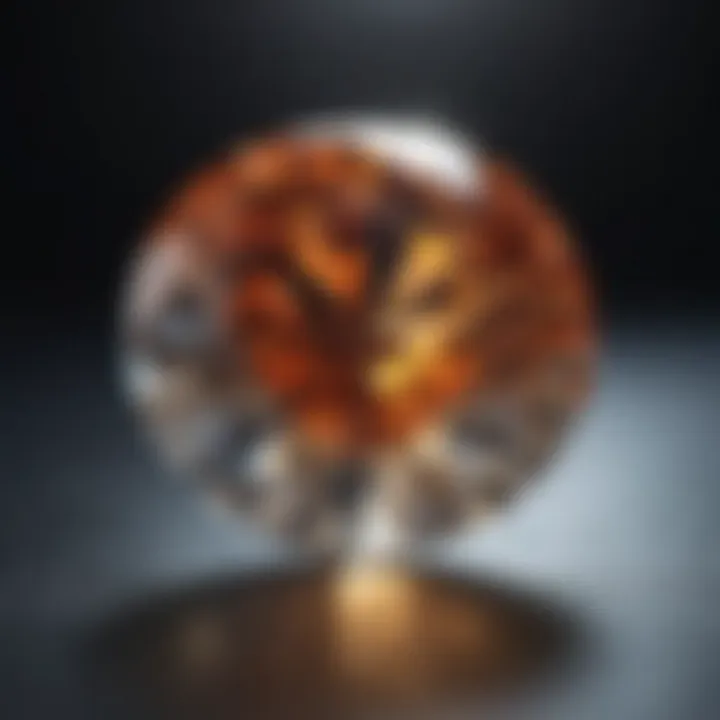
The occasion for which the birthstone is intended is another important factor to consider. Different events call for different styles and attributes. A birthstone ring may be appropriate for an engagement, while a simple pendant may be better suited for everyday wear. The key characteristic here is versatility.
Choosing the right occasion can ensure that the jewelry is not only beautiful but also practical. For example, a gemstone may be worn on special occasions to convey significant meanings or feelings. The unique feature of considering occasion is that it guides buyers in making decisions that align with purpose.
Durability and Quality
Durability and quality are essential when selecting birthstone jewelry. Some gemstones are inherently more durable than others, impacting their suitability for daily wear. For example, sapphires and diamonds are known for their hardness, making them ideal for rings that will be worn regularly.
The key characteristic of durability is its role in long-term satisfaction. High-quality materials ensure that the jewelry can withstand the test of time. Durable pieces rarely lose their luster or show wear. However, shoppers should note that quality may come with a higher price tag, leading to potential budget constraints.
Where to Buy
Online Retailers
Online retailers offer a wide range of options when purchasing birthstone jewelry. They often provide a convenient shopping experience that allows customers to explore various styles and prices without leaving home. The key characteristic of online retailers is the accessibility they provide.
Shopping online can be beneficial due to the abundance of choices available. Customers can compare prices and read reviews, which helps in making informed decisions. However, the lack of physical handling of the jewelry before purchase can be a disadvantage.
Local Jewelers
Local jewelers have the unique ability to provide personalized service. Buyers can interact directly with knowledgeable staff, who can offer tailored advice regarding gemstone selection. The key characteristic of local jewelers is their community focus.
Choosing to purchase from local jewelers supports small businesses in the area, which can create a sense of goodwill. Additionally, buyers can inspect the quality of the jewelry in person. However, the selection may be more limited compared to online options, which could restrict choices depending on locality.
Gem Shows and Exhibitions
Gem shows and exhibitions present an exciting opportunity to engage with the wonders of gemstones. They typically showcase a variety of pieces from different artisans and vendors, often resulting in unique finds. The key characteristic of gem shows is the interactive environment they provide.
Attending these events allows collectors and enthusiasts to discover rare pieces that may not be readily available in stores. This unique feature can be a major advantage to those looking for something special. On the downside, these shows can sometimes attract a large crowd, making it overwhelming to navigate.
Caring for Birthstone Jewelry
Caring for birthstone jewelry is essential for preserving the beauty and integrity of these precious pieces. Each gemstone has unique properties and vulnerabilities, which means the methods of care can differ significantly among types. Proper maintenance not only extends the life of the jewelry but also enhances its visual appeal. Here, we will explore general maintenance tips, storage recommendations, and the benefits of professional cleaning services to ensure your birthstone jewelry remains in optimal condition.
General Maintenance Tips
- Regular Cleaning: Clean your jewelry regularly to remove dirt and oils. For most gemstones, a gentle soap solution with warm water will suffice. Use a soft cloth or a brush with soft bristles. Avoid abrasive materials as they can scratch the surface.
- Avoid Chemicals: Harsh cleaning chemicals, such as bleach or ammonia, can damage gemstones. Always read the labels of cleaning products to ensure compatibility with your jewelry.
- Handle with Care: When putting on or taking off jewelry, do so in a safe space. It is easy for a piece to slip and fall on hard surfaces, leading to potential damage.
- Avoid Exposure to Harsh Environments: Protect your birthstone jewelry from extreme temperatures, humidity, and direct sunlight. These environmental factors can alter the appearance and integrity of the stone.
Storage Recommendations
Proper storage is another vital aspect of caring for birthstone jewelry. Here are some recommendations to ensure your pieces remain intact:
- Separate Storage: Store each piece separately in soft pouches or lined jewelry boxes to avoid scratches and tangling.
- Temperature Control: Keep your jewelry in a controlled environment. Avoid storing near heat sources or in overly humid areas, which can cause stones to crack or discolor.
- Use Anti-tarnish materials: Consider using anti-tarnish strips or cloths in storage cases, particularly for silver settings. This helps prevent tarnishing and keeps your pieces looking bright.
Professional Cleaning Services
Sometimes, professional cleaning is necessary for your birthstone jewelry. Here are a few reasons to consider this option:
- Expert Handling: Professional jewelers understand the delicate nature of different gemstones and can clean them properly without causing damage.
- Deep Cleaning: They can perform a deep clean that removes dirt build-up that regular cleaning may not address.
- Repairs and Maintenance: Professionals can inspect settings, clasps, and stones for wear and tear, providing repairs if necessary to prevent loss.
Market Trends and Investment Potential
The realm of gemstones is not just a field of beauty and craftsmanship; it also holds significant potential for investment. Awareness of market trends in gemstones enables consumers and investors to navigate this intricate market with greater insight. Understanding these trends can lead to informed decisions, whether one seeks to purchase a birthstone for personal enjoyment or as an investment asset.
Popularity of Gemstones
The popularity of gemstones fluctuates based on various factors. Cultural shifts, fashion influences, and marketing strategies play crucial roles in determining which gemstones gain favor at any given moment.
- Social Media Influence: Platforms like Instagram and Pinterest significantly sway consumer preferences. Gemstone trends often emerge through celebrity endorsements and influencer promotions. Engagement with this content can increase visibility for specific stones.
- Sustainable Sourcing: There's a growing demand for ethically sourced gemstones. Consumers are increasingly concerned about how stones are mined and whether they support fair trade practices. Labels indicating sustainable mining can enhance the appeal of certain stones, lifting their market value.
- Customization: Many buyers express interest in unique, customized pieces. This trend has enhanced the desirability of less common gemstones that can be tailored for individual tastes.
Overall, gem enthusiasts and consumers should stay aware of emerging trends. These not only affect personal preferences but also impact the investment landscape.
Investment Value
Investing in gemstones requires a discerning eye and a sound understanding of the market. Unlike conventional assets, such as stocks or bonds, gemstones offer a unique investment potential.
- Rarity and Demand: Gemstones, especially rare ones like alexandrite or jadeite, often appreciate in value over time. Factors contributing to their market value include rarity, quality, and demand. Potential investors should research specific stones and their historical performance in the market.
- Market Volatility: The gemstone market can be less predictable than others. Economic fluctuations can greatly impact demand and prices. Knowing the risks is crucial before making any investments.
- Long-Term Appreciation: Gemstones are generally viewed as long-term investments. Unlike trendy products, which can lose value quickly, quality stones usually retain, if not increase, their value due to enduring appeal.
When considering investment in gemstones, factors such as market trends, sourcing practices, and potential for future demand should be considered. Caution and research are key for those looking to navigate this dynamic landscape.
Culmination and Future Perspectives
The exploration of birthstones goes beyond mere adornment. It encapsulates cultural history, personal significance, and evolving trends within jewelry and fashion. Birthstones have long been a source of pride and meaning, making their importance in personal and collective narratives unmistakable. Each stone not only symbolizes a month but also represents traits and qualities esteemed across various societies.
Reflecting on birthstone significance reveals how these gemstones serve as markers of time and identity. From garnet to turquoise, these stones are deeply interwoven with individual stories and cultural traditions. As people connect with these gemstones, we see a blend of personal taste and historical reverence. This understanding enriches the experience of choosing birthstone jewelry, elevating it from mere transactions to meaningful engagements.
Reflecting on Birthstone Significance
Birthstones are imbued with stories and meanings that resonate through generations. Each stone's qualities embody emotional and spiritual values associated with birth months. For example, sapphires symbolize wisdom and nobility, while garnets represent protection and passion. The cumulative significance of a birthstone often reflects a person's characteristics or aspirations. It is this deeply personal connection that keeps the popularity of these gemstones alive, signaling a trend that may be embraced even more in the future.
Moreover, the rise of custom jewelry further enhances the relevance of birthstones. Consumers increasingly seek unique pieces that encompass personal narratives. Incorporating birthstones into designs allows for bespoke craftsmanship, making the jewelry feel more exclusive and personal. The significance of these precious stones, thus, evolves as consumers embrace individuality and heritage in their choices.
Potential Shifts in Consumer Preferences
As the landscape of consumer preferences shifts, so too does the perception of birthstones. Younger generations value sustainability and ethically sourced materials. This demands a re-evaluation of how birthstones are mined, crafted, and sold. Transparency about sourcing practices plays an integral role in the decision-making process for many consumers today, influencing which gemstones are favored.
Social media platforms and influencers also shape contemporary preferences. They heighten the visibility of lesser-known gemstones, inspiring curiosity and demand beyond traditional birthstones. For instance, stones like labradorite and morganite are gaining prominence as attractive alternatives.







